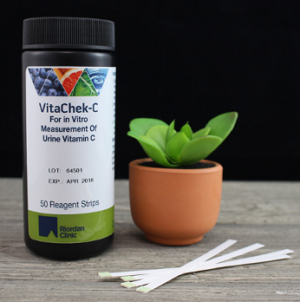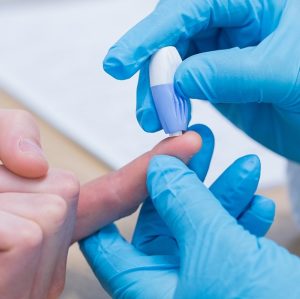We are pleased to advise we now offer Food Intolerance Testing.
Once your test has been purchased online, it will be dispatched to you with instructions.
Please follow these instructions to collect your blood sample and send this back to the Lab using the pre-paid envelope.
Results take upto 10 working days to arrive back with us and one of our Nutritionists will contact you to discuss the results.
More Information:
- Contents of your Test kit and Instructions: Blood Collection Procedure Card
- Demonstration Video: Blood Collection Procedure Video
- Foods Tested: Food List
- What is an IgG?
- IgG stands for Immunoglobulin (type G). Immunoglobulins are a class of proteins that function as antibodies produced by the immune system in response to foreign bodies entering the body. There are several different types of immunoglobulins with IgA, IgE, IgG, IgM being the most well-known.
- Why do foods cause an IgG response?
- Generally, foods are broken down during digestion into their component parts e.g. amino acids, glycerides etc. These pass harmlessly through the gut into the bloodstream. However, occasionally small fragments of partially digested or undigested foods are able to pass through the gut wall into the bloodstream where they are recognized by the immune system as being ‘foreign’. The immune system responds by making IgG antibodies to these foods.
- Do high IgG antibody levels cause symptoms?
- When a food causes the body to produce high levels of IgG then these antibodies combine with the protein in the food to form an ‘antigen-antibody complex’. These complexes are usually eliminated by other cells in the immune system. However, if the immune system is overloaded, these insoluble molecules become deposited in tissues within the body, causing chronic inflammation and the subsequent production of symptoms.
- Is it possible to have high IgG levels and not experience symptoms?
- Yes, some people do have high IgG levels to certain foods but do not have any symptoms at all. This is most likely due to their immune system being extremely efficient at clearing away the antigen-antibody complexes before they have chance to be deposited in the tissues and cause a problem. While it is true that certain common foods are more likely to show a positive result e.g. wheat, dairy, soya. The reason for this is that these foods are consumed on a regular basis in our diet and along with digestive issues this can increase the likelihood that the body may react to them. While an elimination diet will always be the gold standard, the benefit of doing a food intolerance test is that it will be able to quickly show which of the foods that are eaten on a regular basis, are a potential problem. In addition, the tests are able to highlight more unusual foods which a person may not have considered removing from their diet.
- Why test for IgG antibodies to foods?
- The efficacy of a diet based on the measurement of IgG antibodies specific for food components has been demonstrated in a number of conditions, both in independent studies and clinical practice. Excellent results have been obtained in patients with migraine, IBS and obesity.
- What should be considered before testing - Can I take the test if I am pregnant?
- A food intolerance test is not recommended during pregnancy as the immune system is suppressed. However, 4-6 weeks after giving birth should be ok.
- What should be considered before testing - What is the lower age limit for testing?
- Cambridge Nutritional Sciences (CNS) existing policy for a lower age limit on testing for IgG food antibodies is that we do not recommend testing on children under the age of 2 years. We base this on the European Society for Paediatric Gastroenterology, Hepatology, and Nutrition Guidelines for the Diagnosis of Coeliac Disease 2012, which states that there is a possibility of false negative results occurring in infants younger than 2 years of age. This related to the fact that the infant gut is more permeable than that of an adult coupled with immature mucosal immunity that is still in the learning and development stage. We have used this criterion as antibody measurements in Coeliac Disease are comparable to food IgG measurements used in our food intolerance tests. However, we are aware that there are in fact no published guidelines that specifically indicate a minimum age for testing for such IgG antibodies, for example the guidelines for testing for coeliac antibodies indicate that such testing can be performed any time after the introduction of gluten into the diet. Therefore, where such requests are received from a statutory regulated professional the decision of when and what tests to perform will remain the responsibility of the requesting clinician.
- What should be considered before testing - Is there any medication that I should avoid when taking a food intolerance test, due to its potential effects upon the results?
- Customers should avoid the use of immunosuppressant medication if possible if performing these tests, as they may have an impact upon the results. Please refer to the medication datasheet in the “Support” section for further details.
- How does the test work?
- Food extracts are 'printed' onto nitrocellulose 'pads'™ on a glass microscope slide, together with calibration standards and controls. A blood sample provided by the patient is diluted and dispensed onto each printed microarray. Food IgG antibodies, if present, bind to the food extracts and the results are measured by a high-resolution scanner, before being calibrated against the standards using the FoodPrint reporting software to give quantitative results. This software then produces a tailor-made printout of the final food IgG antibody result for each food on the requested food panel.
- What is the difference between FoodPrint and Food Detective – Do they use the same technology and how does the accuracy compare between the two tests?
- The Food Detective is a point-of-care food intolerance test which uses ELISA technology to detect the presence of IgG antibodies to 59 common foods. There is no need to send your sample off to a lab as the test can be carried out in clinic, giving results within 40 minutes. The test will show results, as blue spots if positive and includes a control to identify whether or not the test has been performed correctly. The FoodPrint is the name of our comprehensive laboratory service and requires samples to be sent off to the lab, where they are analysed and results returned within 10 working days. The technology is more advanced than that employed by the Food Detective, as it uses microarray technology which enables a more sensitive test to be performed. Due to this, a greater number of foods can be tested and we offer a choice of 7 panels. FoodPrint 40, 60, 120, 200, vegetarian, vegan, herbs and spices, as well as an Indicator test. The Indicator test provides a positive or negative response and will require an upgrade to a larger test if the result comes back positive, in order to identify which foods are causing the problem.
- Do you need to re-introduce foods before taking a FoodPrint or Food Detective test – if so, how long for?
- In general, we recommend that you follow your normal diet, so that the test will reflect what you usually eat. However, if you have specifically avoided a food for more than three months e.g. cow's milk, which used to be part of your normal diet and you would like it tested, we would recommend it is reintroduced. The recommendations are to reintroduce the food for 1 week eating a normal portion of that food at least once daily before taking your blood sample. If symptoms occur once the food is re-introduced, we recommend that you discontinue that food and conclude you are still intolerant to it.
- Do I have to fill the microvette all the way to the white line?
- Although it is advisable to completely fill the tube, a half filled microvette tube should be enough to run the test. If there are any problems with a sample the lab will let the customer know. However, if you are ordering two tests we can test from one sample if you provide a full microvette.
- Do you need to store the blood in the fridge if not sending the same day?
- Yes, it does need to be stored in the fridge with the lid secured if not sending on the same day.
- Can I upgrade my test to a larger food panel?
- You can upgrade for up to a maximum of 4 weeks from the date that your first sample is received.
- What are the sample requirements and test turnaround?
- A pin-prick blood sample is required. Results are available within 10 working days.
- Does the FoodPrint test for all subclasses of IgG antibody or only IgG4?
- FoodPrint screens for all IgG subclasses 1-4, with the numbers on the test report representing the total IgG concentration for each food extract in the selected panel.
Store in a cool, dark place out of reach of children
DisclaimerFood supplements should not be used as a substitute for a varied diet. If you are taking prescribed medication, have any medical condition, or are pregnant or breastfeeding, please consult your healthcare practitioner before taking food supplements.
Free UK Standard delivery on orders £45+
Standard delivery is £4.40 for orders under £45
Express delivery is £5.49 for orders under £45
Read More
Standard (by DPD, pre-cleared, no additional charges) prices start from £6.
Express (by DPD, pre-cleared, no additional charges) prices start from £17.49.
Standard (by regular post, estimated 4 – 21 working days) prices start from £8
Courier (by road, estimated 3 – 7 working days) prices start from £15
Express (by air, estimated 1 – 5 working days) prices start from £20.49
Nature's Fix operate a no quibble 14 day return policy*
Additionally, the CCR give you the right to change your mind and cancel an order within 14 calendar days for any reason.
*Nature’s Fix accepts returns of products returned in perfect re-saleable condition i.e. in original, undamaged packaging, not used, with protective seal in place.
If you do decide to cancel your order or you wish to return an item, then you must put this in writing. The most efficient method would be to email help@naturesfix.co.uk with your order number and “return request” in the subject of the email. You should then await authorisation and further instructions.
Read More











